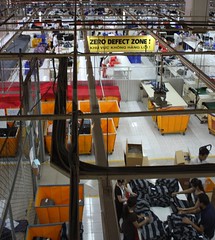
I was fortunate to attend the GT Nexus user conference this week in Hollywood Florida (GT Nexus is a Kinaxis strategic partner). I sat in on a panel discussion on how ERP data can be extended to global partners, and why this matters.
One of the presenters was describing how they can use this information to very quickly assess exposure when world events occur that put the supply chain at risk. In this case, however, we are not talking about a traditional natural disaster situation but instead safety/ethical issues at the factories where their products are being made. The example they gave was the garment factory disaster in Bangladesh last month. Brand owners (those whose labels are on the products) face several challenges:
- As these horrific events occur, customers are starting to look closer at the source of the products they buy. They are starting to evaluate how and under what conditions products are made when making their buying decisions. As such, they are asking brand owners to reveal where products are made.
- The problem is that in many cases, especially in the garment industry, brand owners often don’t know where, exactly, their product is made. Seem absurd? Perhaps. But consider this. You are responsible for procurement of clothing branded for your company. Now, you could go to the individual factories and through a translator, negotiate contracts, navigate legal and governmental regulations, establish quality standards, figure out logistics, etc. Or, you could create a single contract with a third party and have them take care of everything. However, that third party might also contract to a forth party, who actually arranges to have the goods made. With this many levels of middlemen, it becomes very difficult to determine where your product is actually made.
- If you were relying on this factory to manufacture your goods, you need to assess your supply chain exposure. At best there will be a lengthy delay before they can start producing again. At worst, the factory won’t recover from this and you need to source elsewhere permanently. You need to understand what impact this will have on revenues and customer satisfaction.
One of the companies on the panel discussion described how they are using technology to solve the sourcing issues. This garment company has approved a set of factories and equipped each approved factory with QR codes and readers. As the garment leaves the manufacturing floor, it is scanned and the manufacturing location of that garment is captured. This way, the manufacturer knows exactly where each garment is made. And to take it further, with the sourcing information on hand, they could use tools like RapidResponse and GT Nexus, to instantly assess their exposure when significant events occur. Additionally, customers who want to know, can also scan the code (still attached to the garment) which brings them to a website that shows where the garment is made and the safety/working condition history of that site. Are your customers asking for more information on where your products are sourced? How are you dealing with these demands? Comment back and let us know!





Discussions
Leave a Reply